
The Coronation of King Charles III took place a year ago in a day of pomp and pageantry with an ancient ceremony at its heart.
The King was crowned at Westminster Abbey on May 6th 2023 and wore two different crowns at different parts of the service.

At the most important moment of the historic day, the Archbishop of Canterbury placed St. Edward’s Crown on The King’s head. This was the moment of Coronation.
King Charles was the fortieth English monarch since the Norman Conquest to be crowned. Traditionally, St. Edward’s Crown was used for this majestic high point of the ceremony.
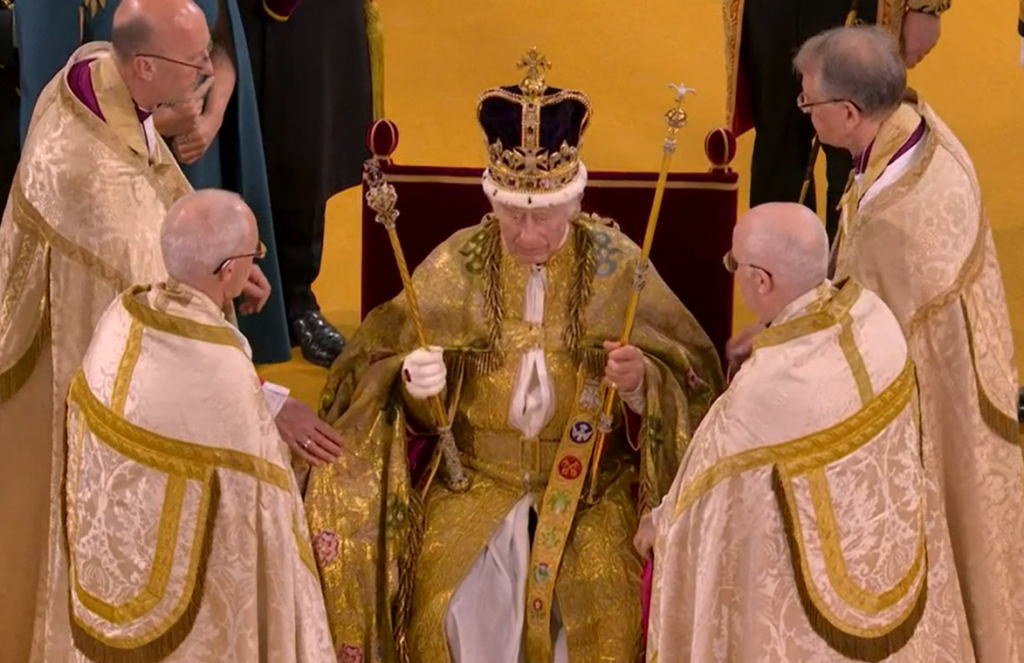
It takes its name from Edward the Confessor who reigned between 1042 and 1066 and whose death led to a dispute over the throne of England which would end when William of Normandy defeated Harold Godwineson at the Battle of Hastings in October 1066.
The golden crown, studded with hundreds of precious stones, was used until the coronation of King Charles I in 1626. His reign led to the English Civil War and the fall of the monarchy. When Oliver Cromwell took power, Charles I was executed and his throne abolished. The Confessor’s Crown was melted down.
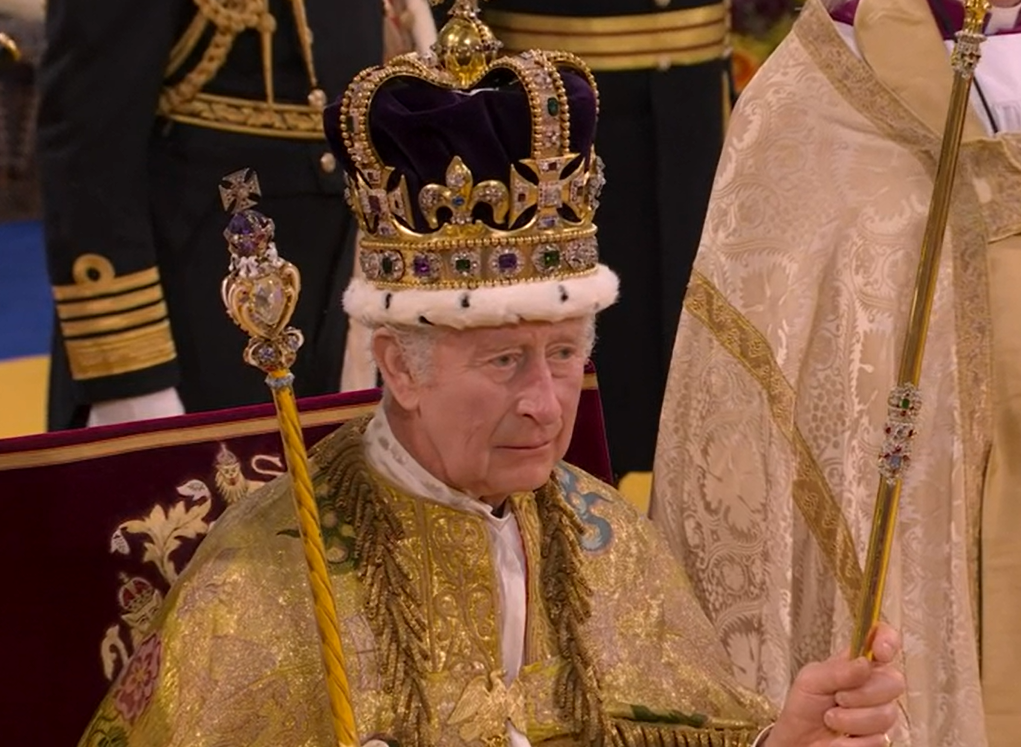
Cromwell’s death and the end of his Protectorate culminated in the restoration of the monarchy under Charles I’s son, Charles II. He had a new version of St. Edward’s Crown made for his coronation in 1661. But it didn’t become a regular at royal ceremonies for over three centuries. It was George V, great grandfather of Charles III, who decided to use it again for his own coronation. His son, George VI, and his granddaughter, Elizabeth II, also chose this crown for their coronation. Charles III continued the tradition in 2023.
However, he didn’t leave Westminster Abbey wearing St. Edward’s Crown, As the Coronation came to an end, he retreated to St. Edward’s Chapel, close to where the Confessor is buried, and changed. When he reappeared for his procession out of the Abbey, The King was wearing the Imperial State Crown.
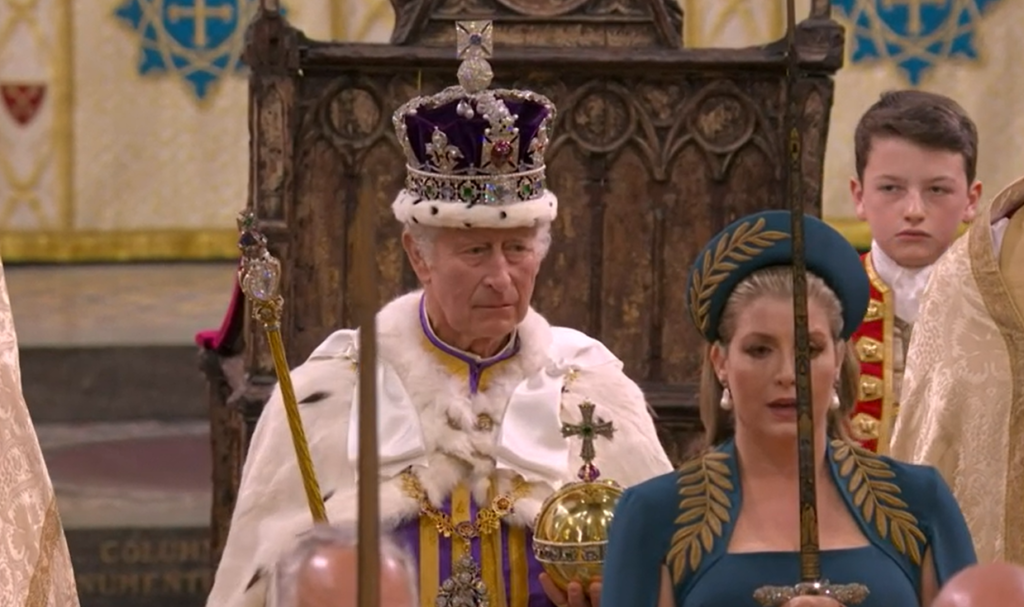
This is perhaps the most recognisable of all the Crown Jewels and it has a fascinating history. Among the hundreds of gems that adorn it are pearls that are said to have belonged to Mary, Queen of Scots and which were reputedly bought by Queen Elizabeth I. Queen Elizabeth II famously said they ‘danced’ for her when the Crown moved.
One of the most striking jewels on it is the Black Prince’s Ruby. It takes its name from Edward, heir to Edward III, and a famous warrior prince in his day. He was given the gem, actually a spinel, by Pedro of Castile and it has since become one of the most famous gems associated with kings and queens even though Edward himself never ascended the throne, dying just before his father.
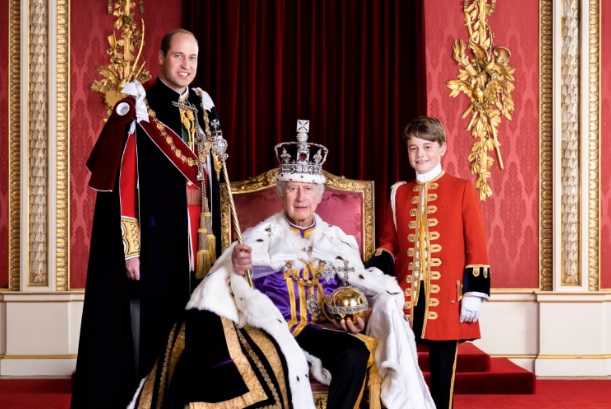
(photo by Hugo Burnand/ Buckingham Palace)
Other sparkling highlights include the Stuart Sapphire and the Cullinan II diamond.
All these historic gems are brought together on a crown with a modern but fascinating history. It was created for the 1937 Coronation but when Garrard & Co began work on it, they believed it would end up on the head of King Edward VIII. However, he abdicated before he could be crowned and so the first monarch to wear it was his successor, King George VI.
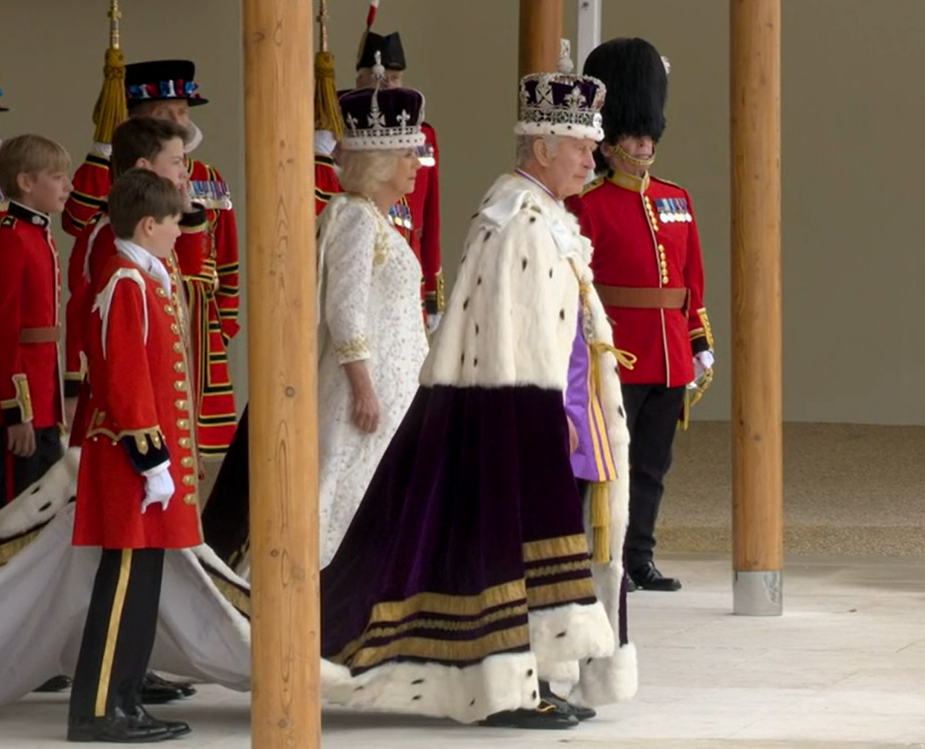
After the moment of crowning, the monarch changes from their red robe of state into their purple robe of estate. For thousands of years, purple has been the colour of royalty and so swapping into this shade highlights the majesty of a crowned monarch. The Imperial State Crown is used for this spectacular moment, the culmination of the coronation ceremony, and it is the crown now worn by monarchs for their official portraits following the historic ceremony.
King Charles III followed all these traditions and so walked out of Westminster Abbey in the Imperial State Crown. It is a far more famous crown and is seen far more often – The King wore it again just months later for the State Opening of Parliament. The Imperial State Crown is always present at that event as a symbol of the constitutional monarchy.
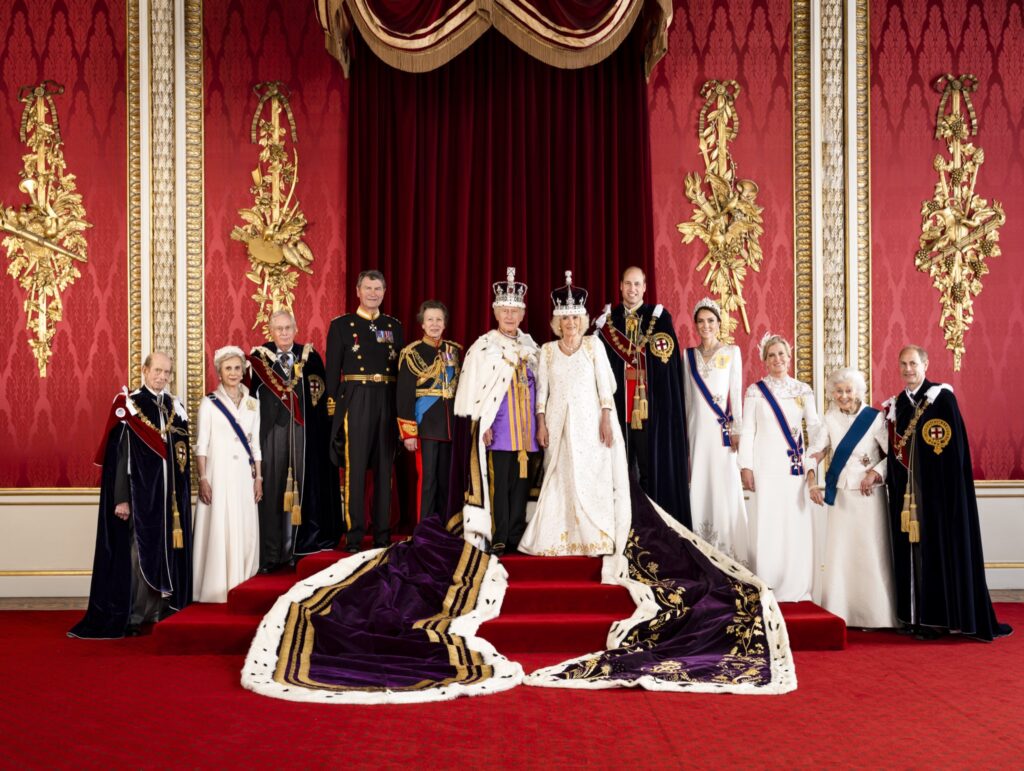
Both crowns had to be adjusted to fit The King’s head before the Coronation. After the ceremony, they were returned to the Tower of London where their history, now renewed again through the crowning of Charles III, is told time and again.
"; n.innerHTML = "window._taboola = window._taboola || [];_taboola.push({mode:'thumbnails-a', container:'taboola-below-article-thumbnails', placement:'Below Article Thumbnails', target_type: 'mix'});"; insertAfter(t, e); insertAfter(n, t) }injectWidgetByMarker('tbmarker');

